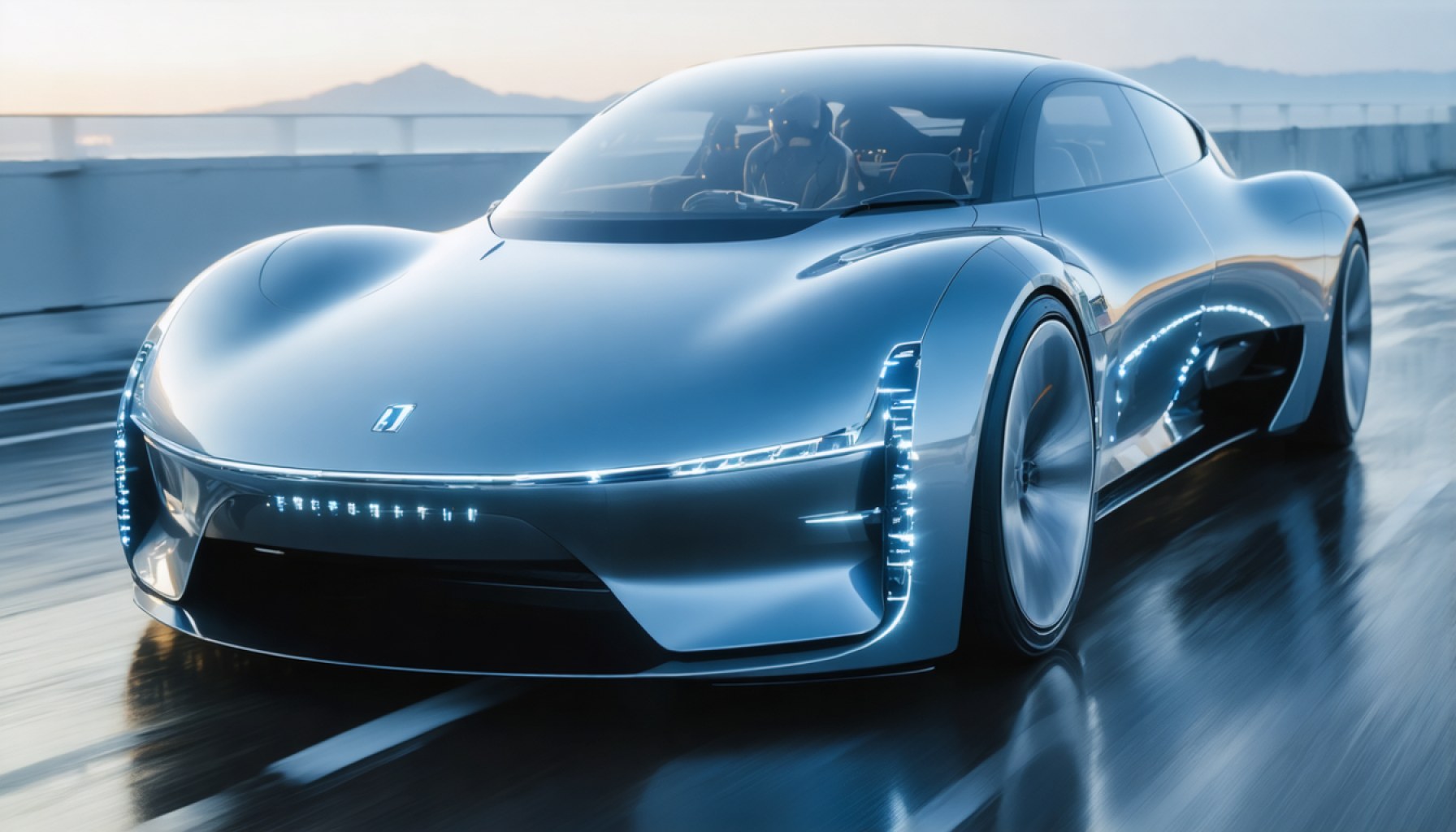- An innovative lithium-air battery technology could revolutionize electric vehicle (EV) range, potentially achieving 500-mile journeys without recharging.
- The breakthrough involves imidazole iodide salt, a novel catalyst that enhances battery efficiency by optimizing reversible reactions and protecting the anode.
- Key improvements include streamlined charging processes and prevention of damaging interactions, extending battery lifespan.
- Experiments have demonstrated resilience, with the technology enduring 960 hours of rigorous testing, highlighting its durability.
- This advancement addresses challenges like cathode clogging, contributing to a more sustainable, lower-emission future.
- With these cutting-edge enhancements, EVs promise to be more appealing, bolstering energy efficiency and aligning with societal sustainability goals.
Picture a world where electric vehicles glide effortlessly for hundreds of miles without a charge, their range only a dream before. This vista may soon come into view, thanks to a breakthrough in lithium-air battery technology developed by a visionary group of researchers. They have introduced a transformative mediator into battery packs—a chemical diplomat harmonizing the chaotic world within.
Visualize, if you will, this component working tirelessly to streamline the charging process, ironing out inefficiencies that once sapped power and shortened life. At the heart of this innovation lies a novel imidazole iodide salt, acting as both catalyst and protector. It orchestrates a symphony of reversible reactions, deftly handling the chemistry that challenges traditional lithium-ion cells. Moreover, it forms a delicate veil over the anode, safeguarding against destructive interactions and prolonging functionality.
Imagine the epic journey an EV could undertake with these powerful cells, storing vastly more energy pound-for-pound. A commute anxiety-free as robust ranges erase lingering doubts; the future might see commonplace 500-mile excursions without the faintest hint of concern.
Defense against cathode clogging, a notorious villain in lithium-air setups, marks another victory. This advancement allows a resilient lifecycle, enduring 960 hours of stringent testing. The mediator’s artful management of chemistry is promising for a cleaner tomorrow, as sustainable tech takes center stage with reduced emissions.
In pursuing energy efficiency, such breakthroughs aren’t just industry whispers—they’re substantial steps toward a cleaner, vibrant future. Embracing EVs not only aligns with societal needs but now holds undeniable allure with credible, cutting-edge enhancements paving the road ahead.
Revolutionizing Electric Vehicles: The Lithium-Air Battery Breakthrough
How-To Steps & Life Hacks: Maximizing Lithium-Air Battery Efficiency
To fully capitalize on lithium-air battery advancements, users can adopt several strategies:
1. Optimize Charging Cycles: Use smart chargers that regulate charging speed to avoid overcharging and allow cells to cool.
2. Regularly Monitor Battery Health: Utilize apps or battery management systems to keep track of performance metrics.
3. Temperature Management: Store and operate the vehicle within recommended temperature ranges to extend battery life.
4. Planning Routes Effectively: Leverage EV routing apps for trips, exploiting extended range to minimize energy consumption.
Real-World Use Cases: Transforming Transportation and Beyond
Lithium-air batteries have potential applications beyond electric vehicles (EVs). Real-world implementations may include:
– Aerospace: Providing power for electric aircraft, reducing weight and increasing flight time.
– Grid Storage: Offering sustainable energy storage solutions for renewable energy sources.
– Portable Electronics: Increasing battery life in mobile phones and laptops, enabling longer use without frequent recharging.
Market Forecasts & Industry Trends
The global market for lithium-air batteries is projected to grow due to the increasing demand for energy-efficient solutions. According to industry reports, the market could reach billions by 2030, driven by innovations in battery technology and the push for renewable energy.
Reviews & Comparisons: Lithium-Air vs. Lithium-Ion Batteries
Lithium-Air:
– Pros: Higher energy density, potentially longer range for EVs.
– Cons: Currently more expensive, complex to manufacture, and faces challenges with efficiency and stability.
Lithium-Ion:
– Pros: Established technology, cost-effective, wide availability.
– Cons: Limited range, potential for overheating.
Controversies & Limitations
While promising, lithium-air technology faces several challenges:
– Cost: Production is currently expensive, potentially limiting initial accessibility.
– Stability Issues: Chemical reactions can lead to inefficiency over time.
– Sustainability Concerns: Material sourcing for batteries can impact environmental and ethical considerations.
Features & Pricing
Current pricing for lithium-air batteries is not widely available, as they remain largely in the research phase. The technology offers features such as high energy density and extended life cycle but at a potential cost premium compared to lithium-ion batteries.
Security & Sustainability
Lithium-air batteries offer promising environmental benefits by potentially reducing CO2 emissions. However, their security hinges on developing stable chemical processes that minimize risks of malfunction or degradation.
Insights & Predictions
The transition to lithium-air batteries could be transformative, but widespread adoption may take additional research and technological refinement. Experts predict that within the next decade, we could see these batteries in niche markets gradually expanding to mainstream applications as costs decrease and reliability improves.
Tutorials & Compatibility
EV manufacturers are likely to integrate lithium-air batteries into future models. Consumers should look for compatibility features and participate in training sessions provided by manufacturers to understand maintenance and operation of new battery tech.
Pros & Cons Overview
Pros:
– High energy density
– Longer driving range
– Potential for lower environmental impact
Cons:
– High development cost
– Current stability challenges
– Need for further research to solve cathode clogging
Actionable Recommendations
– Stay Informed: Follow ongoing research and technological developments in battery technology.
– Support Innovations: Consider supporting companies and policies focused on sustainable battery technologies.
– Adopt Efficient Habits: Utilize the extended range of lithium-air batteries to optimize travel routes and reduce frequent charging.
In summary, lithium-air batteries represent a significant leap in electric vehicle technology, promising a future of longer ranges and cleaner energy. However, challenges remain, and ongoing innovation will be key to achieving their full potential.
For further interest in technology and its advancement, you can visit TechTimes.
